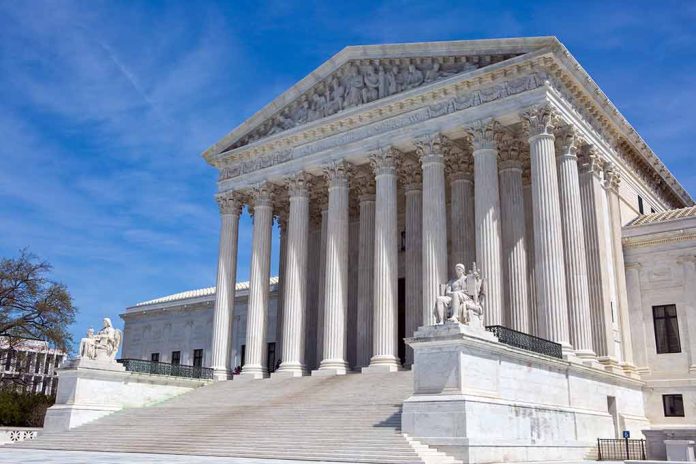
Democrats are urging Supreme Court Justice Sonia Sotomayor to consider resigning, sparking a contentious debate over the future of the nation’s highest court.
At a Glance
- Calls for Justice Sotomayor’s retirement intensify following Donald Trump’s 2024 election victory
- Democrats aim to preserve liberal representation on the Supreme Court before Trump takes office
- Sotomayor, 70, is the oldest Democrat-appointed justice on the current 6-3 conservative-majority court
- Concerns about potential health issues and the risk of further conservative appointments fuel the debate
- Timing and Senate confirmation process pose significant challenges to the proposed strategy
Renewed Calls for Sotomayor’s Retirement
In the wake of Donald Trump’s victory in the 2024 presidential election, Democrats are facing a critical decision regarding the future of the Supreme Court. Calls have resurfaced for Justice Sonia Sotomayor, the first Latina and third woman appointed to the highest court, to consider stepping down. At 70 years old, Sotomayor is currently the oldest Democrat-appointed justice on the bench.
The push for Sotomayor’s retirement is driven by concerns that President-elect Trump could potentially fill another vacancy, further solidifying the conservative majority on the Supreme Court. With the current 6-3 conservative supermajority, Democrats are eager to maintain their limited representation and prevent a potential 7-2 split that could make it even more challenging for liberal justices to secure occasional victories.
Some liberals called for Justice Sonia Sotomayor to retire before Donald Trump returns to the White House. But Democrats would struggle to confirm a replacement. https://t.co/KbhQBZvd21
— The Washington Post (@washingtonpost) November 7, 2024
Strategic Considerations and Challenges
The Democrats’ strategy faces several hurdles, including the narrow window of opportunity before Trump takes office and the complexities of the Senate confirmation process. With a current 51-49 margin in the Senate, securing enough votes for a swift confirmation of a new justice remains uncertain.
“She can sort of resign conditionally on someone being appointed to replace her,” a Democratic senator suggested, adding, “But she can’t resign conditioned on a specific person. What happens if she resigns and the nominee to replace her isn’t confirmed, and the next president fills the vacancy,” a source told Fox News.
This statement highlights the delicate nature of the proposed maneuver and the potential risks involved. Further complicating matters is Senator Joe Manchin’s pledge not to support Biden nominees without Republican backing, potentially derailing any attempts to replace Sotomayor quickly.
Historical Context and Public Reaction
The current situation draws parallels to past scenarios, including the 2016 delay of Merrick Garland’s confirmation by the Republican-led Senate, which ultimately allowed Trump to fill the vacancy. More recently, the passing of Justice Ruth Bader Ginsburg during Trump’s presidency led to the appointment of Justice Amy Coney Barrett, further shifting the Court to the right.
Miranda Yaver, an assistant professor of health policy and management at the University of Pittsburgh, posted on X, “Sotomayor should retire tomorrow and let the lame duck Senate confirm her replacement.”
This sentiment, echoed by various commentators and on social media platforms, reflects the urgency felt by some Democrats. However, the issue remains divisive, with others arguing against pressuring a sitting justice to retire for political reasons. “The left’s absurd calls for Justice Sonia Sotomayor to step down so that President Joe Biden can name a younger replacement should be roundly condemned,” wrote Stephen L. Carter at Bloomberg News.
https://x.com/NARNShow/status/1854552562340368697
Potential Implications and Alternative Strategies
As the debate continues, Democrats are also considering alternative approaches, such as focusing on confirming lower-court judges during their remaining time in leadership. The discussion surrounding Sotomayor’s potential retirement underscores the broader concerns about the long-term ideological balance of the Supreme Court and its impact on future rulings.
While the pressure on Justice Sotomayor to step down continues to mount, the ultimate decision rests with her. As the situation unfolds, it remains to be seen how this political maneuvering will impact the composition of the Supreme Court and the broader landscape of American jurisprudence in the years to come.






















